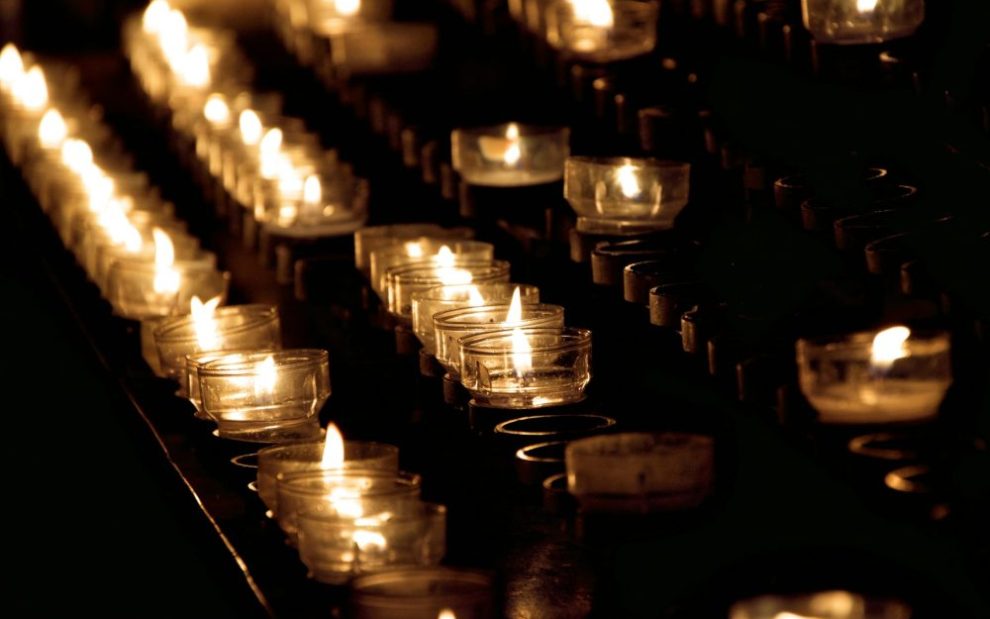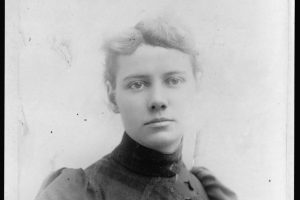Years ago, I stood with my husband Bruce in our parish church for the Easter Vigil. People around me were singing, but I was mute, an ache in my throat. We had recently suffered a miscarriage, the second in the space of eight months, both at about forty-five days’ gestation.
I wanted to feel grace and solace from God on this most holy of nights, but I could not. My well of grief was invisible to everyone around me, and I felt alone and uncomforted. I was 37 years old, and I knew I was in my final child-bearing years.
Miscarriage is defined by the Centers for Disease Control and Prevention (CDC) as the death of a fetus before twenty weeks of pregnancy. Stillbirth is the death of a fetus after twenty weeks of pregnancy. It’s estimated that 10 to 20 percent of women who know they are pregnant suffer miscarriages. And eight out of ten miscarriages happen in the first trimester, before the twelfth week of pregnancy. About one pregnancy in one hundred ends with a stillborn child.
Those are the statistics. They can’t even begin to encompass the actual experience of losing a pregnancy. Many of my family and friends supported me with love and understanding—but a few well-intentioned people said with cheery certainty, “You’ll get over it soon.” Others stated, “It just wasn’t meant to be,” as if that settled the matter. For me, the worst was when someone said plaintively, “But you can have another baby!”—as if healing from this loss was the emotional equivalent of replacing a wrecked car with a new model.
Bruce just held me and said with confidence, “We will get through this.” I was grateful for him and for our delightful three-year-old, John.
At that time, the Catholic Church and most other denominations offered no memorial services or counseling for families who had experienced miscarriages and stillbirths. So Bruce and I decided to create our own ceremony, a ritual to help structure and bring closure to our loss. On a warmish day in April, we drove to the Jesuit Retreat Center south of Denver and walked the lovely grounds with their open hilltops and panoramic views of the Front Range of the Rockies. Bruce carried a hibachi grill, and I carried a letter.
For Bruce, and I suspect for many fathers-to-be, a wife’s pregnancy becomes real only when they see a swelling abdomen, when they hear the baby’s heartbeat, see the ghostly shape on an ultrasound, or feel that first whispery movement within a woman’s belly. But as the mother, it was different for me. Other mothers-to-be who I’ve talked to have felt the same. It doesn’t matter when in the pregnancy it happens; the loss of a new life is emotionally devastating.
I always knew early on when I was pregnant. Maybe it was the steep rise in my hormones, but I was certain a mysterious message was emanating from inside me. That new life and I were already tethered together physically, emotionally, and spiritually.
After my miscarriages, I thought often of two aunts of mine, who either couldn’t conceive at all or had repeated miscarriages. How, I wondered, had they survived the pain? I also thought about the woman with the hemorrhage in Mark’s gospel; doubly stricken by her ailment and by being made ritually unclean for years, she couldn’t even go to the synagogue to pray. Tenacious soul that she was, she touched just the hem of Jesus’ robe and was healed.
Meanwhile, I was often barely able to get through the day. Where was the hem I could touch?
Sitting on the open hilltop, Bruce lit our fire, and we asked God to be with us. We read from Isaiah: “Can a woman forget her nursing child, or show no compassion for the child of her womb? Even these may forget, yet I will not forget you. See, I have inscribed you on the palms of my hands” (49:15–16).
Then I read my letter out loud, telling our babies they were safe with God, assuring them we loved and treasured even their tiny spans of life, and that we would never forget them. I put the letter on the grill, and we watched it burn up into tiny gray flakes that blew away. Bruce doused the fire, and we walked for a while, then headed back to the car.
As we reached the parking lot, Bruce realized we’d left the grill behind, and he went back for it. I leaned on the hood of our car near a pile of jumbled, cast-off concrete, and watched the gray, half-hidden sunset. The hole inside me felt cavernous again; the small comfort of our ritual had drained away.
Then I heard a sound below me, and up out of the bushes came a red fox. Holding my breath, I watched him out of the corner of my eye, afraid even to turn my head to look at him for fear of startling him. The fox stopped in front of the concrete ten feet from me and lowered his head, sniffing the air and listening for rabbits or mice. He was full grown and well-fed, his ruddy winter coat sleek and thick. His neck and chest were creamy white, he had neat black paws, and his bushy tail was tipped with white.
He stayed there for five minutes. Watching him was bliss.
For the first time in weeks, I wasn’t focused on the miscarriages. I knew I couldn’t magically wipe away all my sorrow, but now I saw I had a choice: I could step away from grief only. Grief no longer had to define and limit my life; instead, I could choose grief and—in this case, grief and the sight of this breathtaking creature. Grief and that tawny coat, those slim black legs, and that intelligent gaze. Grief and the wild animal glory of him. God was giving me a gift, showing me I could still revel in the natural world. I realized I could seek out other kinds of beauty as well, and my grief would slowly mend.
Today, several excellent secular organizations—such as the Miscarriage Association, Miscarriage Hurts, Empty Cradle on Facebook, and the Institute of Reproductive Grief Care—work to help families who have suffered this particular loss. You might assume that every Catholic diocese in the United States would also have specific services to help these families, and several dioceses do in fact reach out to them with skill and compassion; among these dioceses are the Archdioceses of San Francisco, Denver, St. Paul, and Minneapolis, as well as the Diocese of Charlotte, North Carolina, and the Diocese of Portland, Maine. Other sources of hope are Catholic Miscarriage Support and Rachel’s Vineyard, which works with grieving families and also offers help and support to women who’ve had an abortion. Rachel’s Vineyard holds regular group memorial services for families and provides counseling specific to each family’s needs.
Sadly, though, many more dioceses do not provide any specialized services. Miscarriages and stillbirths are still a quiet form of death, and the sorrow they cause is often hidden. But the grieving parents, siblings, grandparents, and extended families deserve recognition and supportive services from the larger Catholic Church. Most of all, women shouldn’t have to suffer this sorrow alone.
I was blessed. When I saw the fox, I stumbled onto an insight that helped me slowly mend from our loss. Two years later, I gave birth to our second son, Will. He’s a redhead, as it turned out.
Image: Unsplash/Thomas Bormans















Add comment